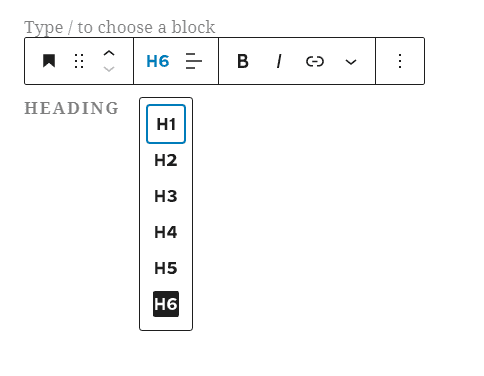This tutorial dives into the fundamental aspect of formatting your WordPress posts with the available options in the built-in WordPress post editor. The Post Editor Toolbar holds the majority of the formatting options you need.
The icons in the Post Editor Toolbar are easily recognizable as they are similar to those found in popular word-processing software like Microsoft Word.
01 The bold & the beautiful

In print design, the use of formatting options such as bold and italics is governed by strict rules. Bold is reserved for defining unfamiliar terms, while italics are utilized for foreign language words, titles of books and magazines, works of art or music, plays, and television series. In contrast, the rules for using such options on the web are more lenient.
When used judiciously, bold and italic text can add variety to large blocks of text and make them more visually appealing. To achieve maximum impact, it’s important to understand how to effectively use the WordPress B and I buttons.
To enhance readability and break up long chunks of text, you can use bold formatting strategically. Consider starting a paragraph with a bolded sentence that highlights a key idea. This draws the reader’s attention and provides a visual contrast to the surrounding text.
Similarly, using italics within a sentence can add emphasis and nuance to your words, and convey your tone more effectively. However, it’s crucial to exercise moderation, as overusing bold and italics can become distracting and annoying.
02 Use subheads to guide the reader
Subheads play an important role in both pages and blog posts. They give readers a preview of the content and can impact their decision to read on. To engage and attract readers, it’s essential to craft subheads that are compelling and give a clear indication of the content.

When it comes to capitalization, consistency is essential. Whether you choose to capitalize only the first letter or use initial caps, it’s important to maintain uniformity within each page of your site. Avoid a mix of different capitalization styles on the same page.
03 Humble but powerful bullets
Bullets are also an effective tool for presenting a series of ideas in a clear and concise manner. If a paragraph becomes lengthy and includes multiple concepts, consider using bullet points to break it down.

By presenting each concept one by one, it becomes easier for readers to scan and understand the information. For example:
- Presenting concept one
- Moving on to concept two
- Wrapping it up with concept three
With bullet points, the information becomes more easily accessible and skimmable.
04 Blockquotes
The key to effective writing blog posts in WordPress, or any writing for that matter, is to convey your ideas concisely and effectively. Long paragraphs, while they may contain valid information, can quickly lose a reader’s attention and create boredom.
The blockquote feature in WordPress is user-friendly and provides a fantastic way to emphasize a specific portion of text. Utilizing it, you can bring attention to a noteworthy quote, idea, or crucial data. The use of blockquote helps to immediately grab the reader’s attention and focus on the text. However, it is suggested to limit the usage of blockquote to one or two per page, as excessive usage may become a hindrance.
05 Paragraph length
The key to effective writing blog posts in WordPress, or any writing for that matter, is to convey your ideas concisely and effectively. Long paragraphs, while they may contain valid information, can quickly lose a reader’s attention and create boredom.
In journalism, it’s widely known that shorter post paragraphs tend to be more engaging for readers, who often lose interest in lengthy descriptions. A good practice is to limit post paragraphs to five or six sentences, giving the reader a logical pause before diving into the next thought.
However, there’s no hard and fast rule for the length of paragraphs. It all depends on the subject matter and the intended impact. Whether it’s short and sweet or requires a deeper explanation, the most important aspect is to communicate your ideas clearly and succinctly.
So, don’t worry, the grammar police won’t be knocking on your door if you occasionally write longer or shorter paragraphs.
06 Logical flow in post
A logical flow in writing is like a GPS for your reader’s journey through your piece. Think of it as a scenic drive down a well-paved road, rather than a bumpy off-road adventure full of detours and dead-ends.
Your readers don’t want their mental journey to be obstructed by unexpected boulders or abrupt endings. Instead, they crave a seamless experience that builds to a satisfying conclusion. With a logical flow, you guide your readers smoothly from one section to the next, creating an enjoyable read every step of the way.
In short, logical flow is the cherry on top of your writing sundae, making the journey just as sweet as the destination.
07 Conclusion
The conclusion of your blog post is a vital part that highlights the most relevant outcomes of your blog post and their importance. It offers contemplation on what has been learned and the objective of the blog post.
End your blog post with a lasting impact on the reader with key takeaways.